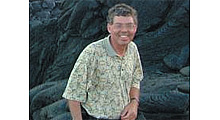
In my NAB Show Observations, I discussed the impact of the FCC “freeze” on processing some TV broadcast applications, writing “While there may be a short-term boost in sales from stations with construction permits to build out their facilities while they still can (even if they may not be protected in the repacking), reduced U.S. equipment sales is bound to put a strain on TV broadcast transmitter, filter and antenna manufacturers and their employees” and added, “some manufacturers may not survive to meet what could be a huge demand for transmitters, filters and antennas in three years.”
While I saw problems in the industry, I was surprised to receive several emails last Friday about SPX shutting down Dielectric. Deborah McAdams describes the event and the potential impact in Dielectric Demise Raises Repacking Alarm.
This week I was able to gather a clearer picture of what's going on with Dielectric, and also the good news for the many stations using Dielectric antennas that SPX is committed to honoring all Dielectric warranties, although it isn't clear how they would do this if manufacturing is shut down. Even better news is there is a very good chance Dielectric products will continue to be available, but possibly under another name.
When SPX announced the closing of Dielectric, it appears they felt broadcasting was a dead-end business and Dielectric had no future. No one would be interested in the business. Apparently, though, I was not the only one emailing other antenna company execs suggesting they might consider picking up Dielectric's intellectual property (IP) for antennas, transmission line and filters. After talking with numerous people in the industry, it appears that not only direct competitors, but also at least one transmitter company is expressing interest in Dielectric's IP and it also appears SPX is willing to sell the IP, but only as a whole--not as individual product lines. Such a deal would be likely to include liability for existing installations, so it might be difficult for a smaller company to acquire Dielectric's IP.
Some of the companies with the resources to make a deal with SPX and continue manufacturing Dielectric products include ERI, Jampro and RFS. It would be ironic if Harris, now newly independent, were to take over the Dielectric line after selling Dielectric its antenna line 13 years ago. I don't have specific information confirming any of these companies are considering buying the Dielectric IP, but I think most would agree they are the obvious choices. I've heard that some of Dielectric's customers may be interested in the IP, but have no additional information.
One thing is clear--it's too early to mourn Dielectric. The response from customers and competitors to last Friday's announcement indicates the company still has value. Of course, Dielectric's value is not only its IP, but the engineers and people on the manufacturing floor that make the products. The best news would be that not only Dielectric's products continue to be available and supported, but also that the people that made and sold these products are still involved with them. During the next few weeks we should learn what going to happen to the Raymond, Maine facility--SPX is not selling the pressurization/radio-detection business that's located there (although that element probably would not be difficult to move), and local news reports indicate the town of Raymond wants to maintain the property for business instead of high-end residential purposes. Stay tuned.
The professional video industry's #1 source for news, trends and product and tech information. Sign up below.

Doug Lung is one of America's foremost authorities on broadcast RF technology. As vice president of Broadcast Technology for NBCUniversal Local, H. Douglas Lung leads NBC and Telemundo-owned stations’ RF and transmission affairs, including microwave, radars, satellite uplinks, and FCC technical filings. Beginning his career in 1976 at KSCI in Los Angeles, Lung has nearly 50 years of experience in broadcast television engineering. Beginning in 1985, he led the engineering department for what was to become the Telemundo network and station group, assisting in the design, construction and installation of the company’s broadcast and cable facilities. Other projects include work on the launch of Hawaii’s first UHF TV station, the rollout and testing of the ATSC mobile-handheld standard, and software development related to the incentive auction TV spectrum repack. A longtime columnist for TV Technology, Doug is also a regular contributor to IEEE Broadcast Technology. He is the recipient of the 2023 NAB Television Engineering Award. He also received a Tech Leadership Award from TV Tech publisher Future plc in 2021 and is a member of the IEEE Broadcast Technology Society and the Society of Broadcast Engineers.
